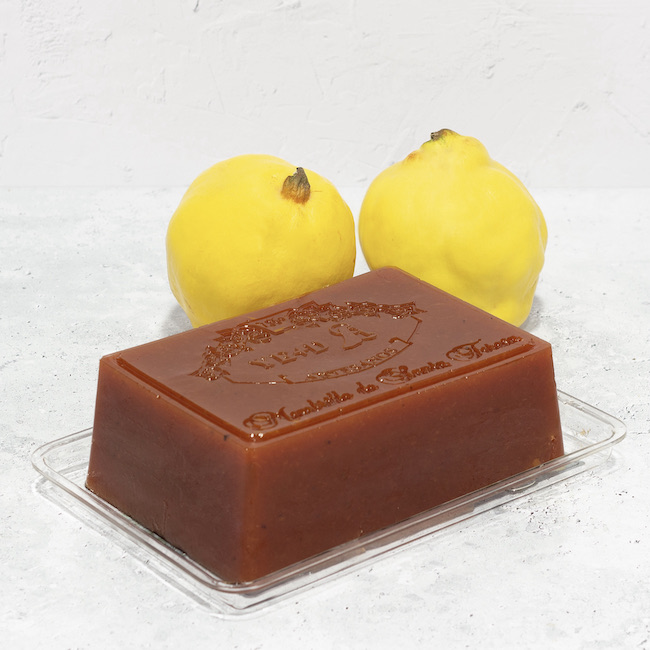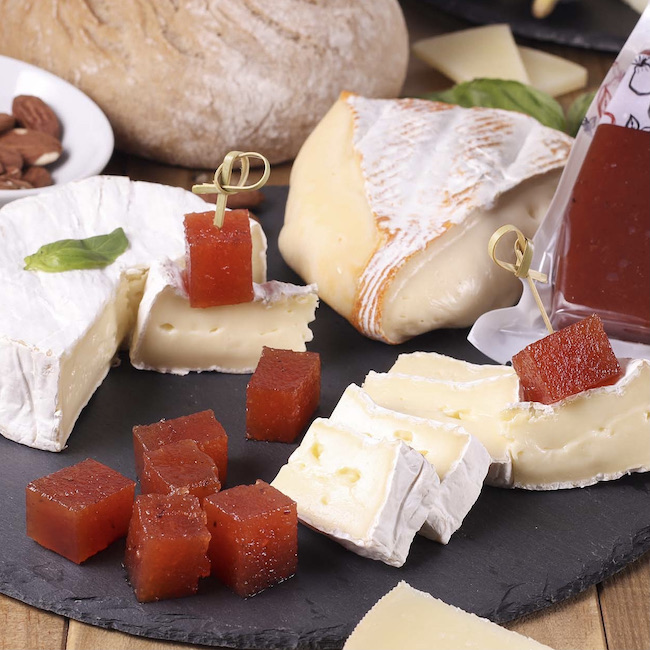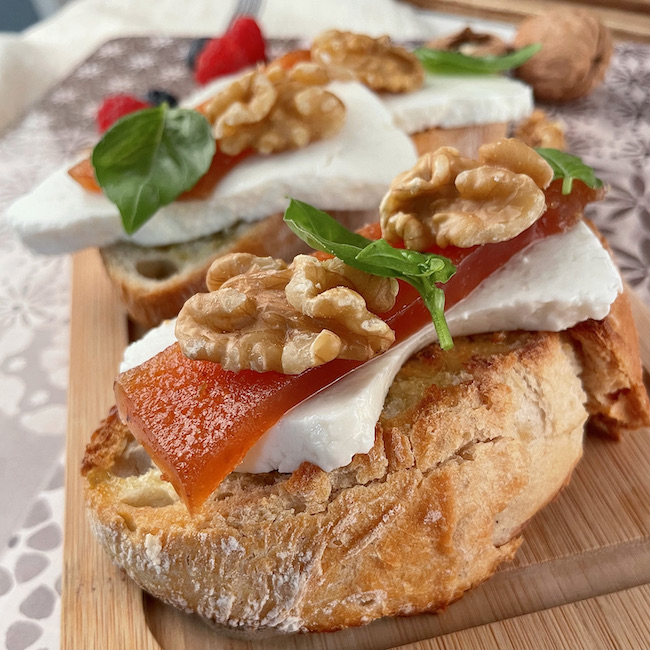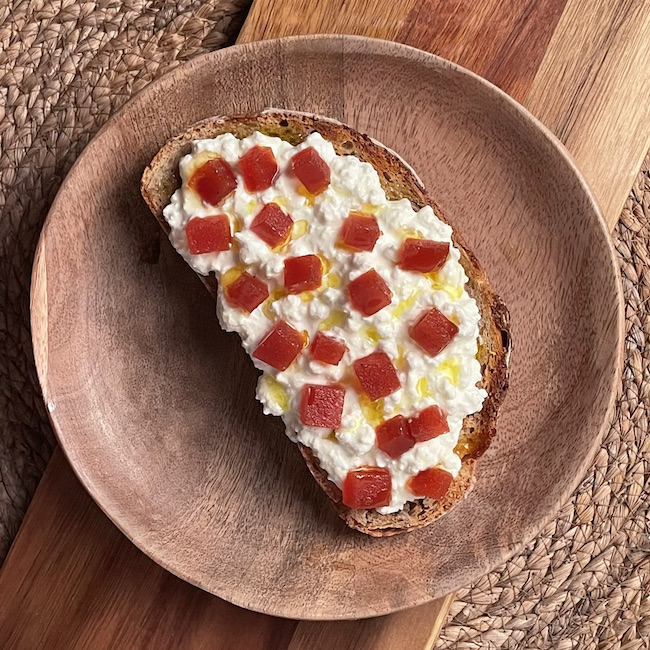.png.transform/rendition-xs/image_image%20(1).png)
Quince Paste, Naturally Sweet
‘Membrillo’ which is harvested in the fall and mainly grows in southern and eastern Spain, is the main ingredient in a unique jelly that perfectly complements cheese... and other products
There's something fascinating about membrillo (quince). So much so that Spanish filmmaker Víctor Erice produced a 2-hour film, El sol del membrillo, to show how hyperrealist painter Antonio López portrayed this fruit (cydonia vulgaris). Originally from Asia Minor and the Caucasus, the Greeks and Romans originally brought it to Spain. This golden yellow fruit is harvested in the fall, mainly in Andalusia, Murcia, and the Valencia region. Due to its hard texture, astringent flavor, and high pectin content, these ancient communities ate it cooked and mixed with sweeteners of different kinds.
These primitive recipes contain what today is known (more or less) as quince paste, one of those recipes that has managed to cross borders due to its artisanal qualities, its uniqueness as a product, and its suitability to be served with many Spanish cheeses, for example.

The Membrillo from Santa Teresa.
A product that crosses borders
Two of the most traditional companies that make quince paste are Santa Teresa Gourmet (Ávila) and Paiarrop (Valencia). Both have also succeeded in exporting their pastes, positioning themselves abroad as companies with a product that has three very attractive characteristics: it's purely Spanish, artisanal, and unique. “In producing our quince paste, we use the recipe from our founder, Amalio Vallés. This recipe, which is more than 50 years old, uses only top-quality, 100% natural ingredients," according to Andrés Vallés, CEO of Paiarrop. In the case of Santa Teresa Gourmet, they began making it "30 years ago, allowing a famous bakery in Ávila, La Flor de Castilla, in a completely depopulated area, to export internationally," explains Isabel Lopez, the company's CEO.
Although these two companies are located 50 kilometers apart, their production is similar in that they both carefully select raw materials and use a traditional approach to cooking. In the case of Santa Teresa Gourmet, they only use what they call the fruit's "tenderloins," i.e. its meatiest part. Perhaps that's why their paste is called quince "meat." "They cook the quince very slowly with sugar, for 1 hour and 35 minutes, although the time may vary slightly depending on ripeness," says López. "The result is a product that contains only quince, sugar, and lemon juice."

Quince paste from Santa Teresa and chese.
Paiarrop highlights the importance of "controlling the temperature and length of each production phase; otherwise, the quince paste will lose some of its important characteristics." The result is, obviously, a sweet jelly that also contains only quince, sugar, and lemon juice, but "is not candy. The main feedback we get from our consumers is that, besides being very good, the paste isn't excessively sweet and it tastes and smells of quince." It also has "a unique, grainy texture that differentiates the quince from other fruit jellies."
Pairings: cheese... and other foods
When it comes to pairings, the ideal partner is cheese, and one in particular. "The classic pairing of Manchego cheese with quince has been exported beyond Spain with great success and this has positioned quince paste all over the world as one of the main and most recognized pairings for cheese," Vallés from Paiarrop says. But not only that, "This has been essential for advancing to the next phase." Nowadays, consumers know the product perfectly well and value the experience it provides when served with other types of cheese. Now we're in a much more exploratory phase. Personally, I would dare to say that any cheese pairs perfectly with a good quince paste. A great option is blue cheese.”, says Vallés. Spain has a wonderful selection, from Valdeón and Cabrales to blue Cabra Payoya cheese.

Tostadas con membrillo de Paiarrop.
For Santa Teresa Gourmet, there are more opportunities to enjoy the paste: "With toast or crackers for breakfast, it pairs perfectly. It's delicious in sandwiches or even as a base for meats. It also works very well when served alongside slightly drier meats, such as poultry." For Paiarrop, it can also be enjoyed "in small cubes in salads, on skewers with fresh fruit, as a tapa with a thick piece of bread and foie, in certain game stews..."
Best of all, as it's easy to preserve, it's available in many parts of the world. "We have been exporting our quince paste for more than 30 years. This has allowed us to bring it to more than 20 countries. The English-speaking market is important. Major players such as Whole foods, Marks & Spencer, Waitrose, and Ocado have long relied on Paiarrop," the company says. Santa Teresa Gourmet also distributes its products in the "Nordic countries, Portugal, France, Australia, Japan, and Israel." In the United States, even José Andrés has included it in several of his recipes. Nobody can resist the charm of this golden yellow, fragrant, deliciously sweet fruit.

Membrillo de Paiarrop con queso batido.

